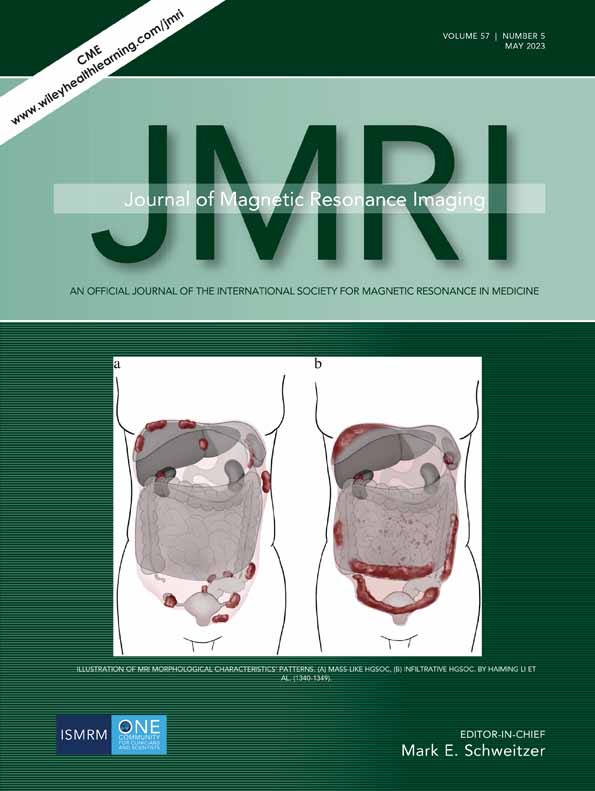Intersession Repeatability of Diffusion-Tensor Imaging in the Supraspinatus and the Infraspinatus Muscles of Volunteers
Contract grant sponsor: This study has received funding from the Quebec Bio-Imaging Network (QBIN) (35450) awarded to Nathalie J. Bureau and Elijah Van Houten. Nathalie J. Bureau was supported by a research scholarship from the Fonds de Recherche du Québec – Santé (FRQ-S) and the Fondation de l'Association des Radiologistes du Québec (FRQS-ARQ 266408).
Abstract
Background
Quantifying the rotator cuff (RC) muscles' viscoelasticity could provide outcome relevant information in patients with RC tears. MR-elastography requires robust diffusion-tensor imaging (DTI) to account for tissue anisotropy in muscles stiffness computation.
Purpose
To assess the repeatability of DTI parameters in the supraspinatus and infraspinatus muscles and to explore DTI tractography conformity with the muscles' anatomy.
Study Type
Prospective.
Subjects
Six healthy volunteers underwent three consecutive shoulder MRI sessions about 10 minutes apart.
Field Strength/Sequence
3T/T1-vibe Dixon and Spin echo EPI DTI (12 gradient encoding directions, b-values 500 and 800 sec/mm2).
Assessment
Supraspinatus and infraspinatus muscles were segmented on the T1-vibe Dixon sequence. DTI image quality was assessed using a quantitative threshold based on the signal-to-noise ratio (SNR). The eigenvalues (), fractional anisotropy (FA) and mean diffusivity were calculated. DTI tractography was visually assessed.
Statistical Tests
DTI parameters within-subject intersession repeatability was assessed with Bland–Altman analysis and the coefficient of variation (CV). Repeatability was considered good for CV < 10%.
Results
The SNR between diffusion-weighted and non-diffusion-weighted images was greater than 3, which aligns with standards for estimating DTI parameters. The FA showed the lowest mean bias (−0.007; 95% confidence interval [CI] −0.031 to 0.018) whereas the λ1 had the highest mean bias (0.146 × 10−3 mm2/sec; CI −0.034 to 0.326 × 10−3 mm2/sec). CVs of the DTI parameters varied between 3.5% (FA) and 8.4% (λ3) for the supraspinatus and between 3.2% (λ1) and 6.8% (λ3) for the infraspinatus. Tractography provided muscle fiber representations in three-dimensional space concordant with RC anatomy.
Data Conclusion
DTI of the supraspinatus and infraspinatus muscles achieved an adequate SNR, allowing the measurement of the DTI metrics with good repeatability, and thus can be used for optimizing stiffness estimation in these anisotropic tissues.
Evidence Level
2
Technical Efficacy
Stage 2




